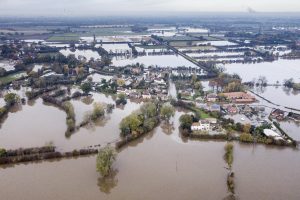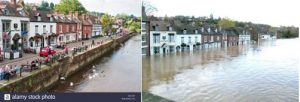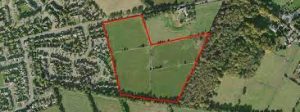When you’re considering a site for development, often what kind of drainage you’re planning on using might not be your highest priority, after all the layout and structure are much more exciting right?
After all, what’s happening on site water-wise doesn’t seem like it would affect the urgent concerns, like development features or how many units need to be built to meet profit margins.
While it’s not the first thing you’d think about, however, flooding potential and how drainage plays into a site’s water management is critical in considering it’s layout.
In this blog post, we’ll be looking at why your site’s drainage profile is so important, which types of site could act as a trigger for flood concerns, and the benefits of getting a drainage expert in to help you really get to know your site.
Why more sites are proving to be flood risks
Unfortunately, as many of us will have seen from recent news reports, flood risk is rising in the UK. As our population grows, our towns and cities have expanded to accommodate. This expansion in urban spaces has resulted in us paving over vast areas with impermeable materials, disrupting the natural groundwater run-off model.
This means more and more water is entering our rivers and sewer systems, and it is also getting there a lot quicker. When this is combined with poor maintenance and increased rainfall events, the result can often be widespread flooding – and more development sites being put at risk.
The Government estimates that around 5.2 million properties in England (around 1 in 6) are at risk of flooding. In financial terms, this equates to annual damages of more than £1 billion.
Figure 1: Flooded Site

Not every site however, poses an urgent flood risk, and while it takes a drainage engineer to tell you for certain, here are some key features to be wary of.
Sites that should trigger concern
Some site’s can act as a trigger and if you’re considering or planning a development on any of the following site types, there is a risk that you could run into drainage issues without some savvy forward planning.
1. Riverside sites
Ever popular, thanks to the appeal of living or working near water, many might assume that a nearby river would be ideal for drainage thanks to being a ready-made discharge point.
But what happens if your site floods? If you’re considering a riverside development, you can find out the flood risk by consulting with a drainage engineer. They can help you adjust the developing layout to minimise the risk and avoid devastated end users.
Figure 2: Flooding in the town of Bewedley

Source: Alamy Stock Photo and www.geography.org.uk
2. Sloped sites
While they are often cited as a concern for earthworks, sloped sites where water is influenced by gravity can prove incredibly challenging in terms of drainage too.
If you wish to situate a building on a low spot, overland flow will likely affect it. And if foul and surface water connection points are located at a higher part of the site, an additional pumped solution might be needed.
Figure 3: Sloped Site

Source: www.mcdonaldjoneshomes.com
This set-up doesn’t always cause issues, but it could result in site layout and maintenance implications, which are always best identified early.
3. Previously undeveloped sites
While they make a fabulous blank canvas for a creative developer, undeveloped sites can sometimes be a drainage danger zone.
The site will likely be restricted to green field run-off, which could be 5l/s or less. If so, the site will need hefty water attenuation measures, with sufficient space within the design to accommodate this.
If they are rural or contain extensive vegetation, it may be difficult to achieve the 10 per cent betterment now required as part of biodiversity net gain. If you fail to meet requirement, you could be asked to make a financial contribution towards improvements in the local area.
Figure 4: Example of greenfield site

Source: www.fishergerman.co.uk
These are just a few of the site types that could spell trouble for your project. But the good news is, once identified these issues can often be easily mitigated.
The benefits of getting to your site’s flooding and drainage profile
While these kind of sites might be at risk of flooding, it doesn’t mean you have to discount them.
A good drainage engineer can carry out the necessary investigations, data analysis and planning elements to create a drainage solution that minimises your site’s flood risk.
In fact, by working with your drainage engineer, you can even enhance the aesthetics and overall value of the development. Drainage solutions, such as Sustainable Drainage Systems (SuDS), improve water quality and biodiversity, and provide opportunities to create amenity spaces.
Whether your site is right next to a river or seems to be safely beyond any flood zones, forewarned is forearmed. By getting to know your site – and the water that will run through it – you are reducing your project’s chance of falling victim to costly delays, last minute redesigns, and unhappy end users.
Ask a drainage engineer to assess your site for you
Not every site that you’re considering will be a flood risk, but why risk not knowing for sure?
If your proposed site is near a river or known flood-plain, is on or includes a slope, or is previously undeveloped, you need to be talking to a drainage consultant.
And even if it isn’t, by including drainage engineering at the early stages, you ensure your project won’t be hit by any big waves, and you’re also not missing out on the opportunity to potentially add value to the final outcome.
Don’t miss out on thoroughly getting to know your site, and plan ahead to avoid missing a crucial piece of the puzzle. Get in touch with the team at Rennard Consulting Limited to learn more about how you can get to know your potential site.